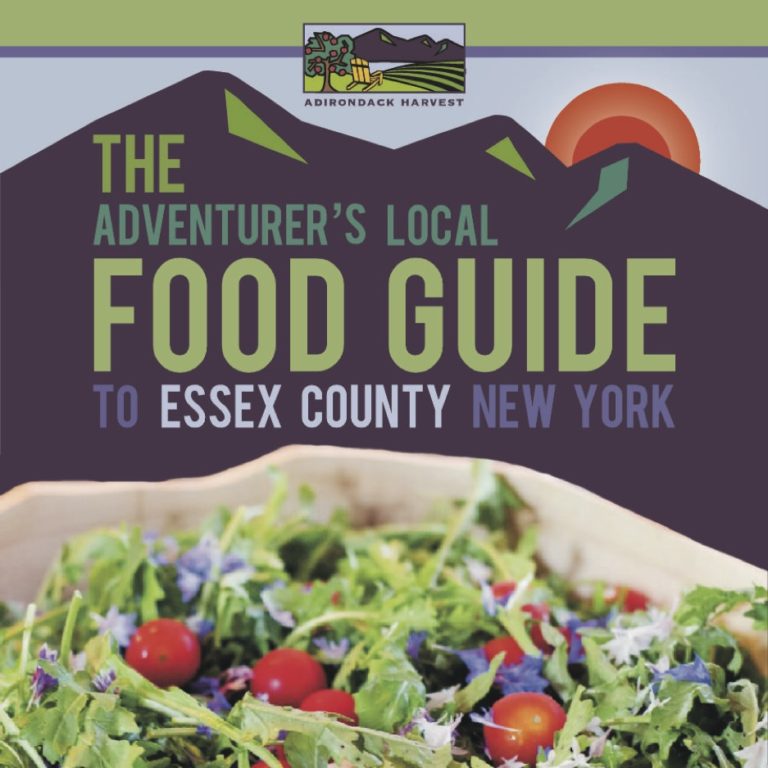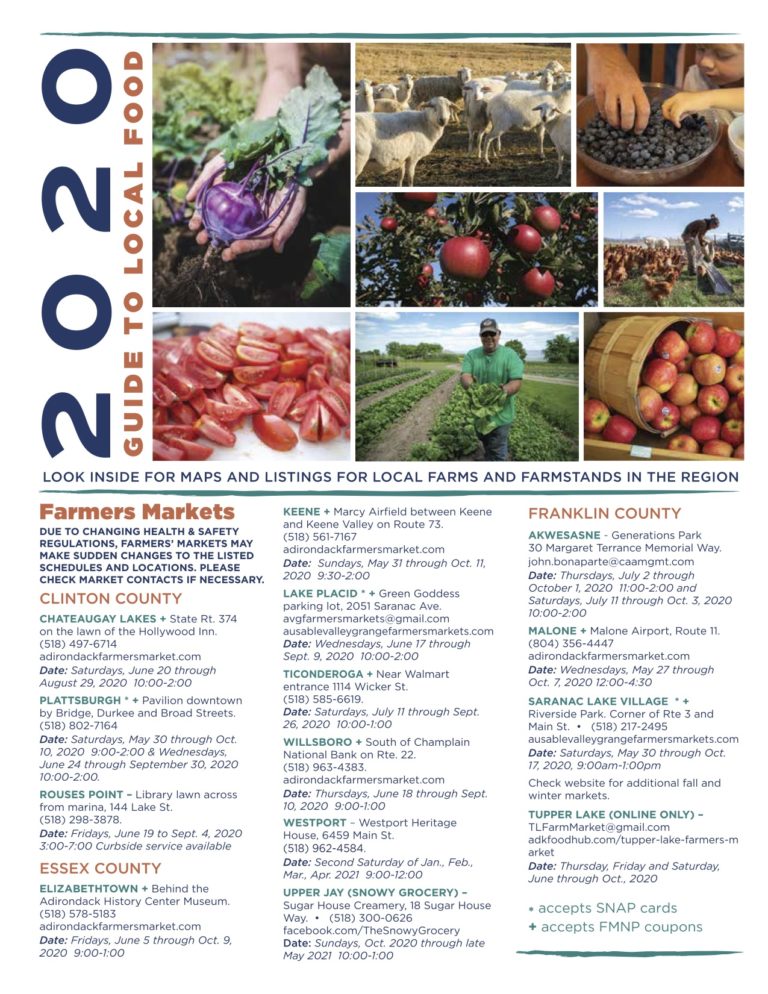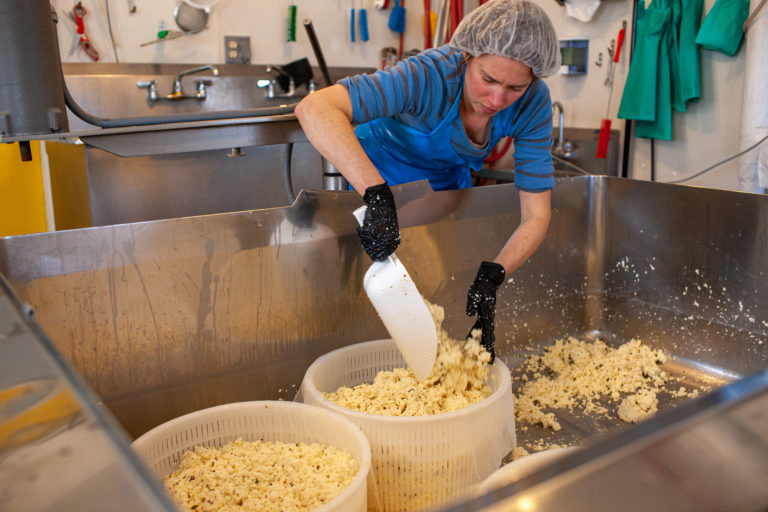


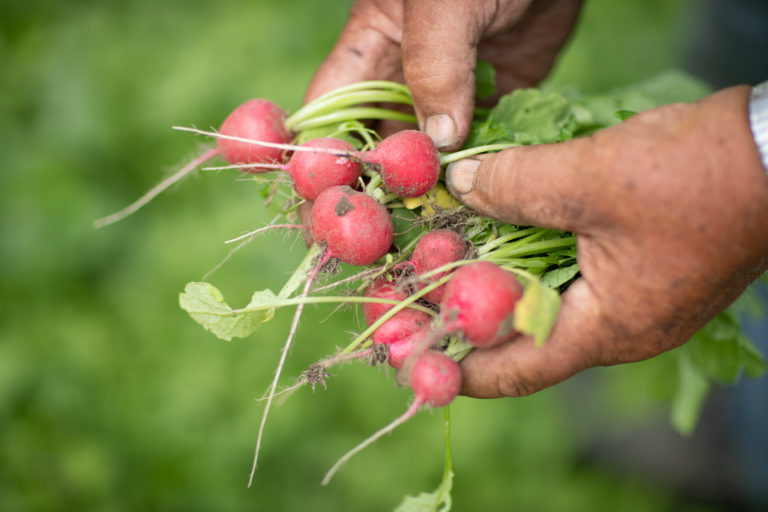
7 Reasons to Love Local Food
Only 2.9 percent of farms in the US are considered “large” with at least $1 million in gross cash income, but they, along with other non-family farms, account for 54 percent of total production in the United States.
The remaining 90 percent of small family farms only account for 24 percent of the value of production. Food that is grown far away on large operations allows us to have an unlimited variety of fresh food year-round. We now have access to things like oranges and avocados, on-demand. However, the more local food we add to our plate, the more we can realize many economic, environmental, and social benefits.
Benefits of Buying Local Food
1. Economic Impacts
Studies show that local foods can have a positive impact on local economic activity by substituting imports and supporting local processing. For example, beef raised on a local farm and processed at a local slaughterhouse has a net benefit to two businesses, rather than one.
A study by Iowa State University found that each dollar spent at farmers’ markets generated 58 cents in additional sales elsewhere in the local economy. And for each full-time equivalent job created at farmers’ markets, a half of a fulltime equivalent job was created in other sectors of the local economy. Another national study of 15 food supply chains found that producers received 7 times the net revenue per unit in local food supply chains than they do in conventional wholesale chains.
2. Better for Farmers
The USDA estimates that on average, a farmer only earns 17.4 cents for every dollar spent on a food item. In shorter supply chains, like when buying through a food hub, farmers earn up to 85 cents for every dollar, and when purchased directly like at a farm store, the farmer receives 100% of every dollar you spend.
3. Better for the Environment
Reducing the number of miles your food travels from field to the shelf directly shrinks your grocery carbon footprint. It’s been estimated that locally grown food creates 5 to 17 times less CO2 than nationally wholesale distributed food.
But more importantly, how food is grown matters. The farming practices used to grow or raise food accounts for 83% of its carbon footprint. Just because something is “local” it does not mean that it is sustainable. However, smaller farms are more easily able to adopt environmentally friendly practices that help preserve clean drinking water, improve soil health, protect wildlife, and pollinators. These methods can include rotational grazing, using cover crops, avoiding harmful pesticides, and wildlife-friendly predator and pest control. Eating local can also reduce food waste, as most food loss happens during production, storage, transport, and distribution. By shortening the chain between farmer and consumer, there is less time and opportunity for spoilage.
4. Healthier and Tastier Food
There are a variety of factors that influence the nutritional quality of food including ripeness, processing, storage, growing practices, and more. Food that is grown locally is generally harvested closer to when it is ripe and spends less time in shipment and on the shelf. Riper fruits and vegetables mean more nutrients and better flavor. Fruits and vegetables that are grown on large scale farms and shipped thousands of miles to grocery stores are bred for traits that prolong their shelf life, like tougher skins to withstand shipping damage. That is one of the reasons why local fresh strawberries (that just stay fresh a day or two) taste so amazing in contrast to conventionally grown berries.
5. Happier Animals
Smaller operations allow for closer quality control. Industrialized livestock operations (like Confined Animal Feeding Operations) are designed to raise many animals in a short period of time. Many times animals are kept indoors or without access to vegetation. Birds and pigs are kept in tiny cages or stalls not much bigger than their bodies. When purchasing local food, you have the opportunity to talk with your farmer about animal welfare practices on their farm. On small farms, animals are more likely to have time and space to graze, forage, and bond with fellow animals.
6. Opportunity to Align With Your Values
The average American spends less than ten percent of their income on food. This is much less than almost everywhere else in the world, in some countries, people spend up to half of their income on food. If you can afford to spend a little more, and reap the environmental, social, and health benefits, why not?
7. Find Your Community
When you buy local food, you generally have the opportunity to engage with farms directly. They are usually more transparent about farming practices and sometimes invite community members to their farms for tours. This face-to-face engagement is otherwise is lost in a traditional wholesale food chain. Buying local food offers you a chance to better understand the work and care that goes into your food and to create a stronger connection to your wider community.
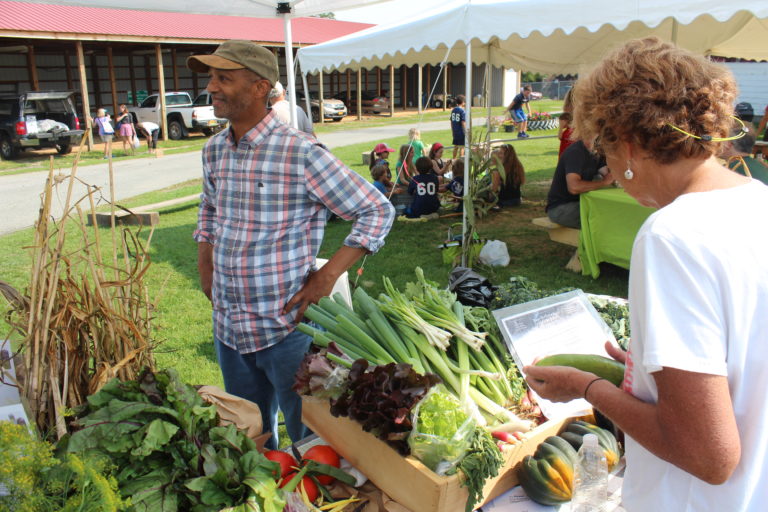
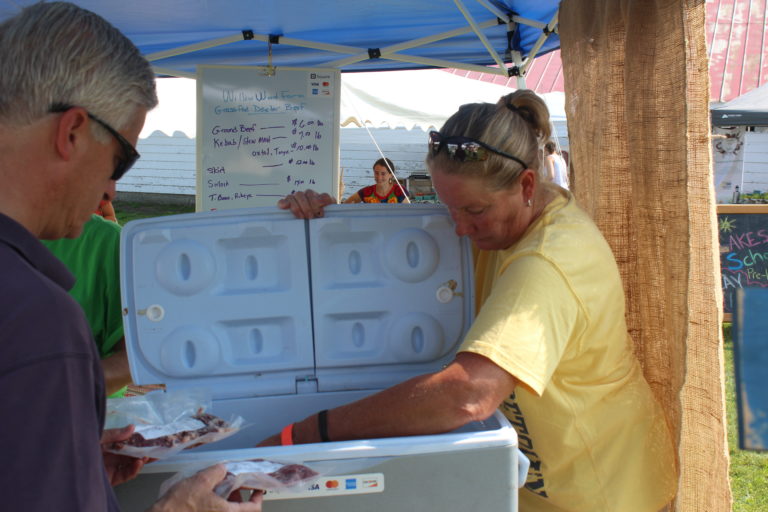

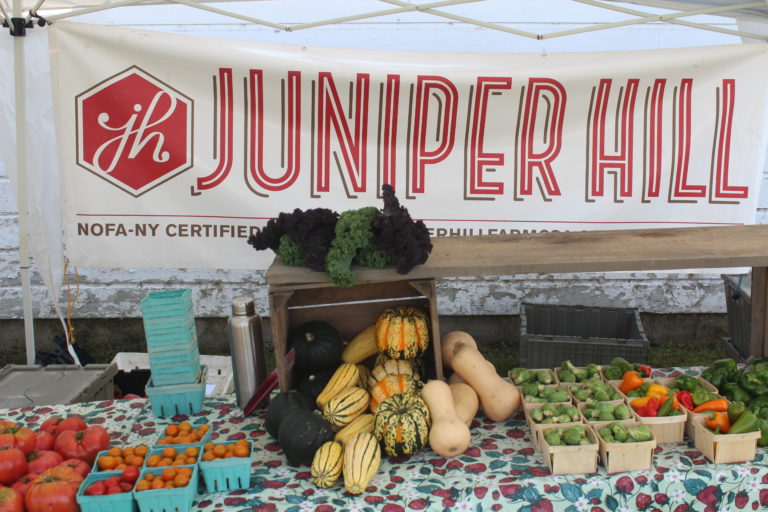
What is “Local Food”?
In general, it is defined as a food product that has traveled less than 400 miles, or within the same state as it’s point of origin.
Local food is broadly defined by the United States Department of Agriculture (USDA) as “the direct or intermediated marketing of food to consumers that is produced and distributed in a limited geographic area.”
The 2008 U.S. Farm Bill states that “Local Food” is defined as a food product that travels less than 400 miles from the origin of the product or is in the State in which it is produced.
In New York State, a 2019-2020 bill has further defined food that is marketed as “local” as a product that has been “grown, raised, or harvested, or produced in New York or it must show descriptive language about the region or distance from New York where the product originated from.”
Many people also consider “local food” to be purchased with direct methods like at farmers’ markets, farm stands, and CSA’s- surpassing the channels generally associated with large scale farms, commodity operations, and big-box grocery stores. There is sometimes also an assumption that local food is grown by small farms, using sustainable methods, fair labor practices, and humanely raised animals.
How to Shop Local
- Visit Farmstands- Check their hours online before you go, and make sure to follow your local farms on social media for updates on what’s new in their farmstore. Find a farmstand here.
- Sign up for a Community Supported Agriculture (CSA) share- in the wintertime or spring you can sign up for a CSA and be guaranteed fresh local food all season long. Some farms offer year-round, spring, or fall CSA’s too. Find a farm that offers CSA shares delivered near you.
- Visit a Farmers’ Market- Many markets are OPEN for the season and offer an outdoor, socially distant way to shop. Find details for a market near you.
- Check out your Local Food Hub or Co-Op- Food hub’s and co-ops are great for one-stop shops. You can usually find a variety of products from many regional producers at one retail location. Find a hub or co-op and their hours and offerings here.
Using SNAP, FMNP, FOOD STAMPS, WIC
Did you know that you can use food assistance programs to buy from local farms and food producers? SNAP, WIC, and FMNP offer opportunities to put your benefits back into your community.
Where to buy local food with Food Stamps, SNAP & FMNP:
Other Resources for Finding Local Food
How to Advocate for more Local Food/Product Availability in your Community
Get local food in your school, business or hospital
Large institutions that serve the public have huge purchasing power. A recent study found that if the State University of New York (SUNY) spent 25 percent of its food dollars on fresh foods grown in the state, it would create $54 million in economic output. Bring information and resources to your college, hospital, or school on the state or federal benefits for buying local food.
Talk with your grocery manager
Ask the manager of your local grocery if they are willing to sell more local food. Reach out by phone or email so they will have a chance to consider the information you provide.
Suggest local ingredients at your favorite restaurants
If your favorite restaurants aren’t using local food yet, talk with the managers and owners about the increased demand for local food.
Share on social media
When you eat local, tell your network. Show your friends and family how easy it is to buy and prepare seasonal food. Share photos on social media using the hashtag #AdirondackHarvest and #EatADK to connect with other locavores.

